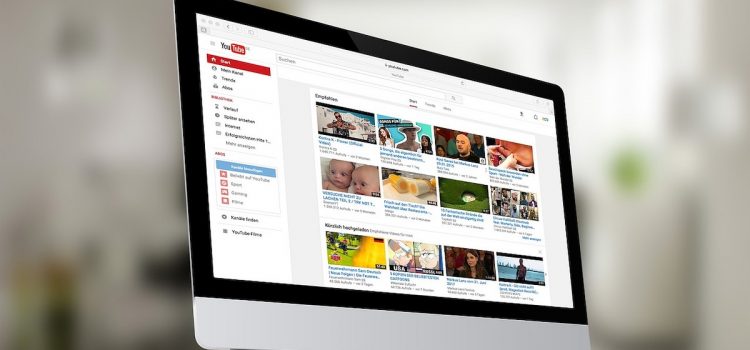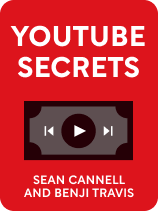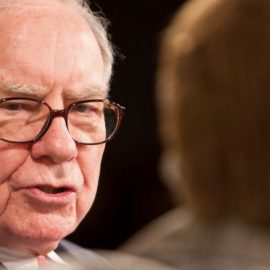

This article is an excerpt from the Shortform book guide to "YouTube Secrets" by Sean Cannell and Benji Travis. Shortform has the world's best summaries and analyses of books you should be reading.
Like this article? Sign up for a free trial here.
What should you do with your YouTube channel before focusing on revenue? What are the various ways you can make money on YouTube? Which is better—channel membership or Patreon?
According to prominent YouTubers Benji Travis and Sean Cannell, the “YouTube secret” is this: you just need a sound business model. In their book, they explain how to create a successful YouTube channel and share several ways to monetize it.
Read on to learn how to make money with a YouTube channel through four revenue streams.
Make Money on YouTube
Travis and Cannell explain that, in a YouTube business, revenue comes third, at least chronologically. First, you create valuable content. Next, you build up a community around your content. Then, you focus on how to make money with a YouTube channel. The influence that you have over the community you build is what enables you to make money.
Once you have enough influence, there are several ways you can make money. Depending on the type of content you create and your community’s interests, some of them will be more viable than others. So, focus on the ones that fit the best with your community and with your vision for your channel.
Google Adsense
Google Adsense is an algorithm that selects ads to display on YouTube videos, monitors how often they are viewed or clicked on, and bills the company running the ad accordingly. If your channel is enrolled in the YouTube Partner Program, Adsense also pays you a percentage of the money it collects from the ads that it runs on your videos. Your channel needs at least a thousand subscribers to be eligible for the Partner program.
(Shortform note: Not all videos that YouTube allows on their platform are eligible for Adsense monetization, even after your channel has been admitted to the Partner program. To earn Adsense revenue, your videos also have to be deemed “advertiser friendly,” either by YouTube’s algorithms or their manual review process. For some channels, this can be a significant source of frustration, especially as the advertiser-friendly guidelines change from time to time.)
Product Promotions
Regardless of whether your channel’s enrolled in YouTube’s Partner Program and whether your videos are ad-friendly, you can make money promoting products that you know would appeal to your subscribers. Many online retail platforms (such as eBay, Amazon, and Shopify) provide “affiliate marketing” programs, to help their merchants connect with influencers who can promote their products. With an account in an affiliate program, you can get personalized links to products on the online marketplace that pay you a percentage of the profits from every sale that results from people following the link. Companies may also pay you a flat fee to promote their products in your videos.
However, Travis and Cannell caution you not to promote a product unless you genuinely believe your viewers will like it and benefit from it. Pitching products that aren’t good can hurt your YouTube business by undermining your influence.
| Affiliate Marketing Regulations If you choose to do any kind of product promotion, make sure to research applicable regulations. In the United States, the Federal Trade Commission (FTC) requires you to disclose any financial interest or personal relationship that you have with the company that makes or distributes the product you’re promoting. You can just explain in your video whether the company gave you a free sample, promised you a commission on products sold, or whatever the case may be. But your disclosure statement should be ‘clear and hard to miss’ according to the FTC. The FTC also prohibits using false information in marketing. So don’t tell people a product is great unless you’ve actually tried it out and verified that it is great. If you haven’t tried it, or if you tried it and thought it was terrible, promoting it on your YouTube channel could not only damage your credibility with your audience but potentially land you in court. |
Merchandise
You can also use your YouTube channel to promote your own products. If you already have a business that sells products or services, you may earn more money indirectly from promoting them on your YouTube channel than directly through other mechanisms.
If you don’t already have products or services to sell, you can always start selling branded merchandise, such as T-shirts and coffee mugs with your channel logo on them. And, there are services that will handle production and distribution for you. So, you can create a new revenue stream without taking time away from video production.
(Shortform note: Another merchandising tactic that can be particularly effective for some influencers is to partner with an existing company. This works because both parties bring unique assets to the table: You bring your expertise about what kind of product your viewers want and your influence to market the product. The company brings manufacturing expertise and capabilities.)
Crowdfunding
As the authors point out, you can also fund your channel through direct patronage of people who appreciate your content. There are a couple of mechanisms for collecting donations from patrons.
Within YouTube itself, if you have over a thousand subscribers you can enable “channel memberships.” This allows viewers to support your channel with recurring monthly donations. YouTube keeps 30% of the membership payments and gives you the remaining 70%.
There are also third-party crowdfunding platforms, of which Patreon is the most popular among YouTubers. It, too, enables you to receive monthly donations from supporters, and it takes only 10% of the funds. But, it lacks the convenience of direct integration with YouTube.
| Principles for Crowdfunding Success In his Success Principles, author Jack Canfield offers a number of tips on making crowdfunding work: Tell your story: Show people why what you’re doing is worth doing. In this case, that would mean highlighting the value your videos deliver. Ask for money: You might think that if you have a Patreon page set up for your channel and you’re delivering quality content, it’s obvious that you want people to support you financially so you can continue to produce more content. But Canfield says it’s still important to ask for donations explicitly. And when you do, clearly explain how you’ll use the money that people donate. Testimonials: Encourage other people to share how they’ve benefited from your work. Reward donors: Perks for supporting your cause help to incentivize donations. For example, you could offer early or exclusive access to certain videos. However, note that some platforms restrict what types of rewards you can offer. Post updates: Posting regular updates about your progress and plans helps to reassure your donors that you’ll deliver (or continue to deliver) the value you’ve promised. |
Exercise: Choose a Revenue Stream
In this exercise, you’ll have a chance to apply Travis and Cannell’s advice to your own YouTube business.
Recall that there are several ways to make money on YouTube, including YouTube ads, affiliate marketing, promoting your own company or merchandise, and crowdfunding. Some revenue sources are a better fit for a given channel than others. What revenue stream do you think best fits your channel, and why?

———End of Preview———
Like what you just read? Read the rest of the world's best book summary and analysis of Sean Cannell and Benji Travis's "YouTube Secrets" at Shortform.
Here's what you'll find in our full YouTube Secrets summary:
- A guide to developing a successful YouTube business model
- How to produce videos and grow your audience
- How to find and implement the most effective revenue streams






